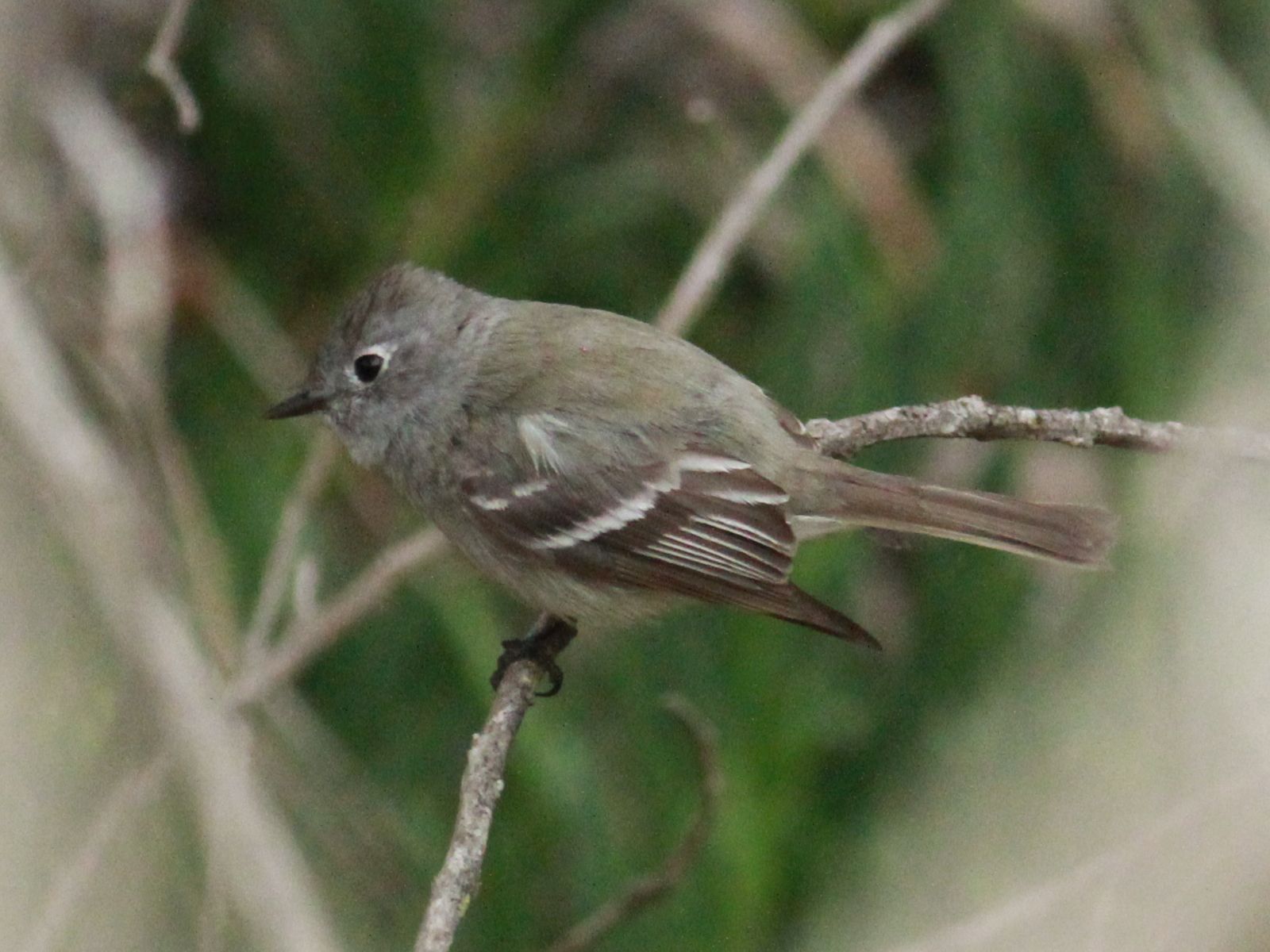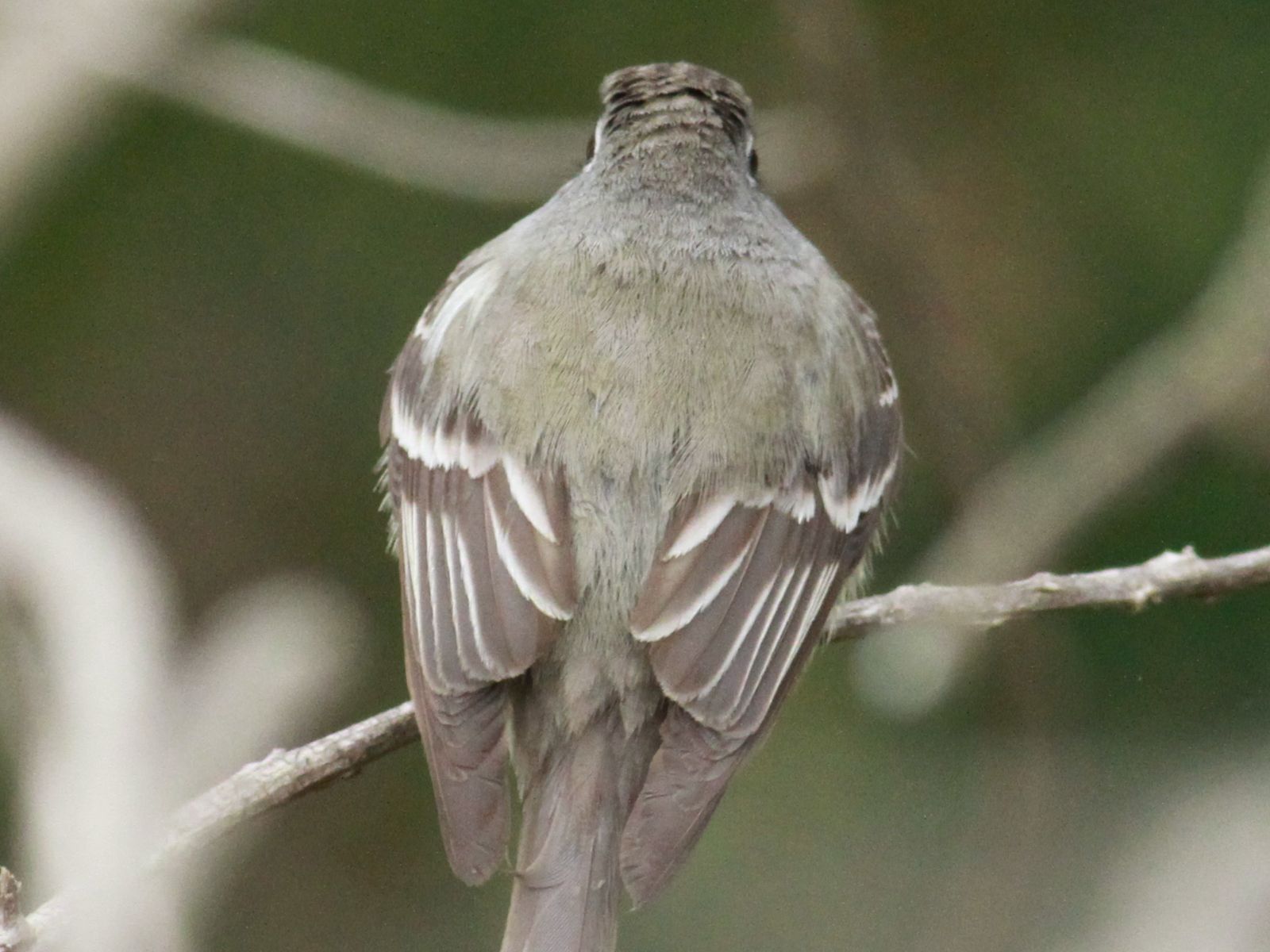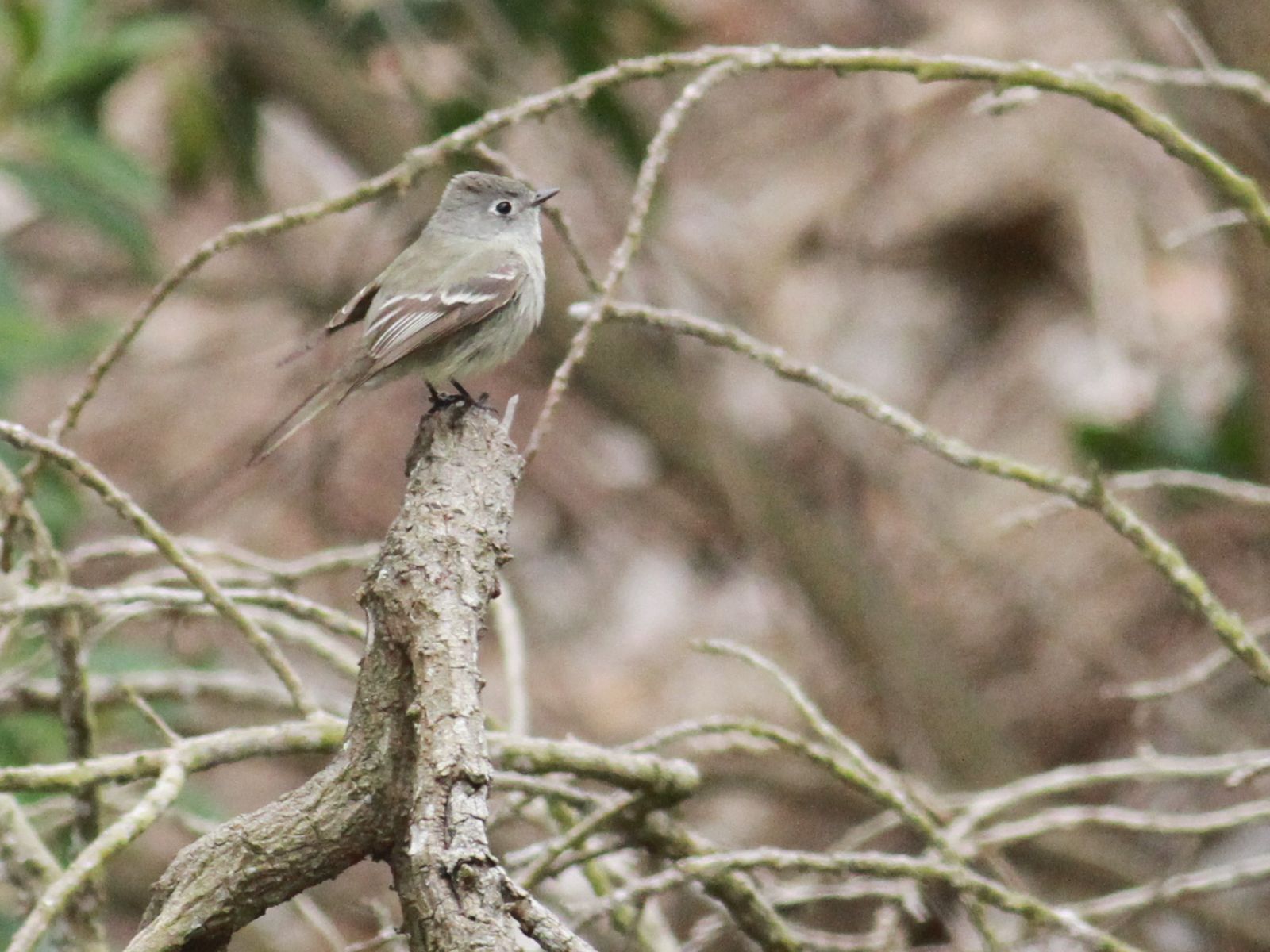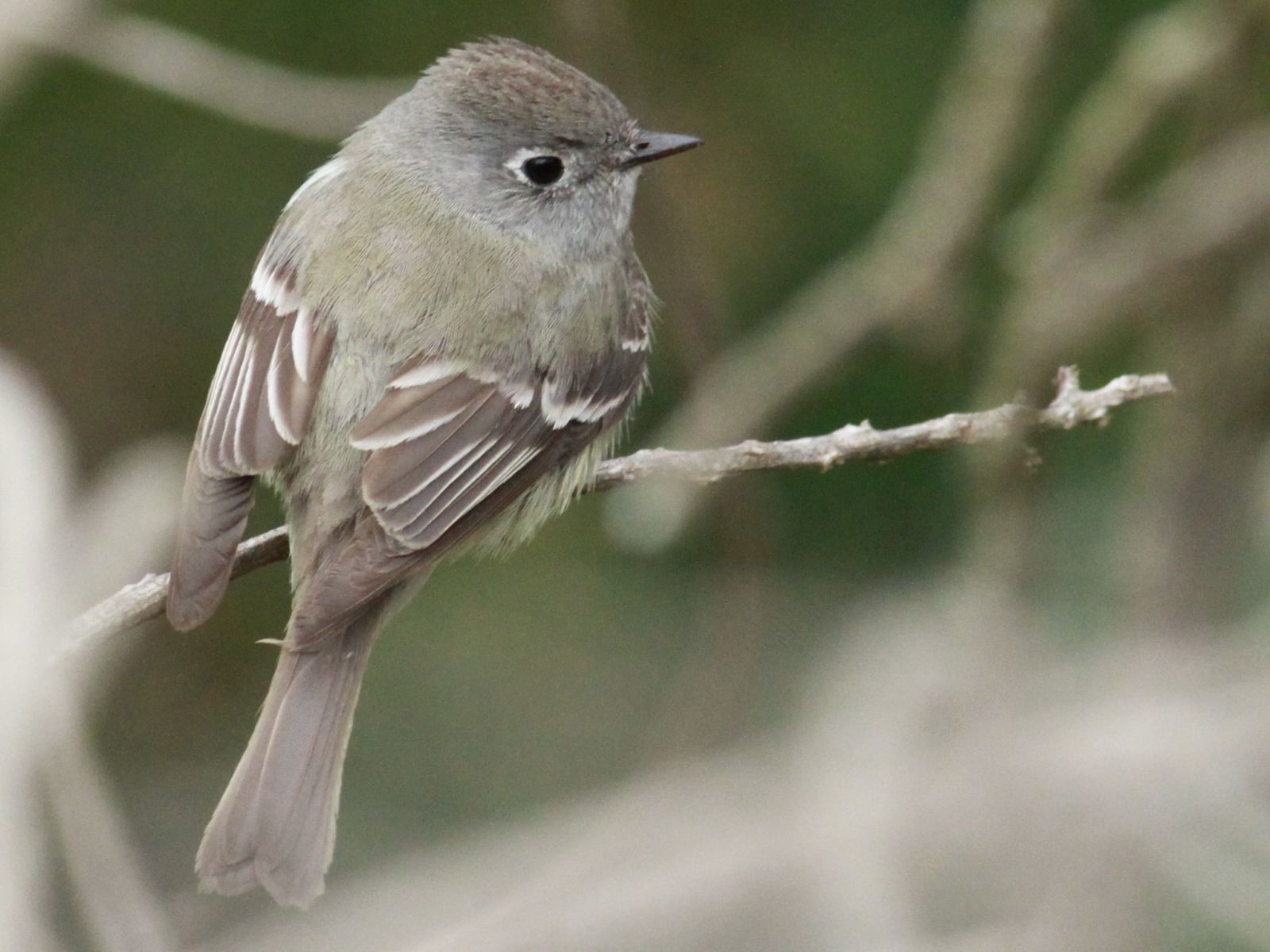[All photographs copyright, Gary Nunn 2013] – I have been looking out for migrant flycatchers lately and was pleased to find this characterful Hammond’s Flycatcher Empidonax hammondii frequenting the “wall” area on the east side of Fort Rosecrans National Cemetery. Based on the San Diego Bird Atlas (Unitt, 2004) the Hammond’s Flycatcher can be found on spring migration here generally a few weeks earlier than the similar looking Dusky Flycatcher – the first clue to its identity!
In addition to the date of observation, several important field characters of Hammond’s Flycatcher can be seen in the photographs below which separate it from the closely similar, and rarer, Dusky Flycatcher. The condition of the plumage is very worn, particularly the wing and tail feathers, and these look faded, almost brownish in fact. This worn condition is characteristic of Hammond’s Flycatcher in spring, and contrasts the relatively freshly molted plumage of Dusky Flycatcher at this time of year. In addition the primary projection extends a great length beyond the secondaries, characteristic of Hammond’s versus a short primary projection of Dusky. Finally the bill is narrow at the base and fine shaped, quite weak looking in fact, and dark blackish colored, characteristic of Hammond’s, and unlike Dusky which has a stronger looking, broader based, and usually bicolored bill.
I was lucky enough to obtain more photographs of this Hammond’s Flycatcher from different angles under cloudy late afternoon lighting. In fact it was raining lightly some of the time. This flat lighting helps illustrate some other important field characters. The overall grey coloration of the face and plain grey lores, giving it an “emotionless” staring appearance, also separates it from Dusky Flycatcher, which has pale-colored lores and a more aggressive appearance. The underparts are also a cool grey color throughout with perhaps only a hint of yellowish wash at the rear, unlike Dusky which is more yellowish in spring. Also important is the grey throat color, again unlike other species with throats that appear whiter. Really, only the back of this bird has a different color – a green tone – being olive in coloration. And there is, urm, maybe the hint of something in the crown color…
Hammond’s Flycatcher is about the second most likely Empidonax to be encountered in San Diego County, after Pacific-slope Flycatcher. I would say around 95%, or more, of Empidonax flycatchers that I find here on the coast are the latter species. There is always something new to learn or questions to be asked about this difficult to identify genus! Which in fact brings me to my question – maybe it is an artifact of lighting or the feathers are wet, or I am losing my marbles – does the bird shown here have dark reddish coloration in the crown feathers?










Great picks for I.D..
Hey thanks Jim! I tried photographing Hammond’s Flycatcher before and bright sunlight makes it very difficult to discern differences among these difficult to identify species. Turns out a cloudy, rainy day is the best studio lighting – don’t see those days often in San Diego is the trouble!